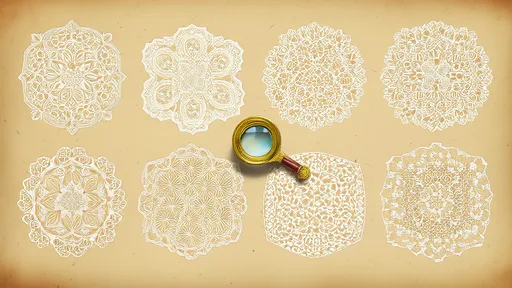In a groundbreaking fusion of fashion and technology, researchers have unveiled a revolutionary concept that could transform everyday clothing into functional data storage devices. The key to this innovation lies in quantum memory fibers – ultrathin strands capable of storing digital information at the atomic level. This development blurs the line between wearable tech and personal computing in ways previously confined to science fiction.
The science behind these memory fibers stems from manipulating quantum states within specially treated polymer threads. By encoding data in the spin states of electrons or the orientation of molecules, these fibers can store astonishing amounts of information in spaces no thicker than a human hair. Early prototypes demonstrate storage capacities rivaling current USB drives within a single square centimeter of fabric.
What makes this technology particularly remarkable is its durability under real-world conditions. Unlike conventional storage media that degrades with bending or exposure to environmental factors, quantum storage fibers maintain data integrity through washing, folding, and typical wear. The fibers achieve this through error-correcting quantum codes that preserve information even when individual atomic states fluctuate.
The potential applications extend far beyond simply carrying files on one's sleeve. Imagine jackets that automatically store medical records accessible to emergency responders, or work uniforms containing instructional manuals and safety protocols. Fashion designers could embed entire lookbooks or design histories directly into garment labels. The military sees potential for uniforms storing encrypted identification and mission data.
Privacy and security considerations are being addressed through innovative approaches. Data access might require specific gestures like touching certain parts of the clothing simultaneously, or proximity to a paired device. Some prototypes use biometric authentication, only granting access when worn by the registered owner. The fibers themselves can be programmed to degrade specific data after predetermined time periods.
Manufacturing challenges remain before quantum storage clothing hits retail shelves. Current production methods struggle with consistency at scale, and integrating the fibers with conventional textiles requires specialized looms. However, several tech-fashion collaborations have announced plans for limited-edition products within the next eighteen months, suggesting these hurdles are being overcome.
The environmental implications could be significant. By reducing reliance on traditional electronics with shorter lifecycles, clothing-based storage might decrease e-waste. Moreover, the fibers are being developed from recyclable polymers, creating potential for sustainable data storage solutions. This aligns with growing consumer demand for technology that doesn't contribute to the throwaway culture dominating the electronics industry.
Consumer adoption may face initial hesitation regarding data security and the psychological adjustment to wearing one's storage devices. However, proponents argue that people grew accustomed to carrying smartphones everywhere – wearing data storage represents merely the next evolutionary step. The convenience of never forgetting a flash drive again could prove irresistible to many users.
As research continues, scientists speculate about future iterations incorporating fiber-based processors and displays, potentially creating complete computing systems within clothing. For now, quantum memory fibers stand poised to revolutionize how we think about personal data storage, merging the digital and physical worlds in the most intimate way possible – through what we wear every day.

By /Jul 16, 2025

By /Jul 16, 2025

By /Jul 16, 2025

By /Jul 16, 2025

By /Jul 16, 2025

By /Jul 16, 2025

By /Jul 16, 2025

By /Jul 16, 2025

By /Jul 16, 2025

By /Jul 16, 2025

By /Jul 16, 2025

By /Jul 16, 2025

By /Jul 16, 2025

By /Jul 16, 2025

By /Jul 16, 2025

By /Jul 16, 2025

By /Jul 16, 2025

By /Jul 16, 2025